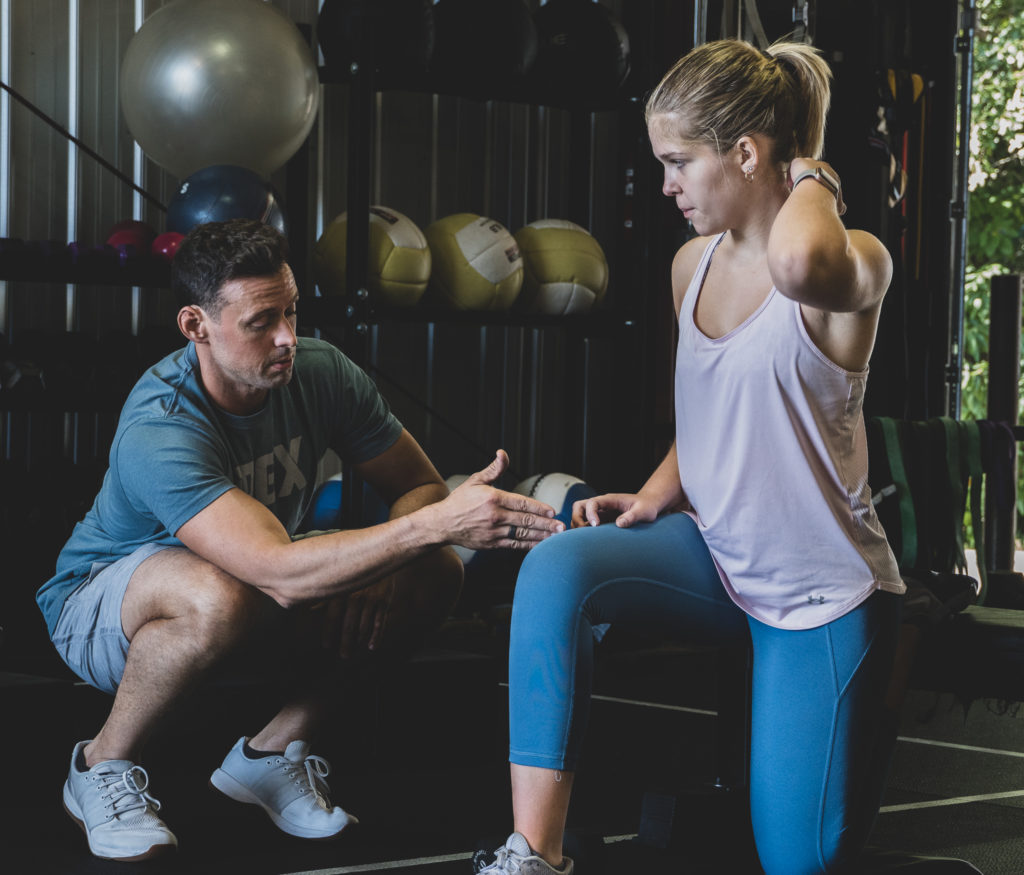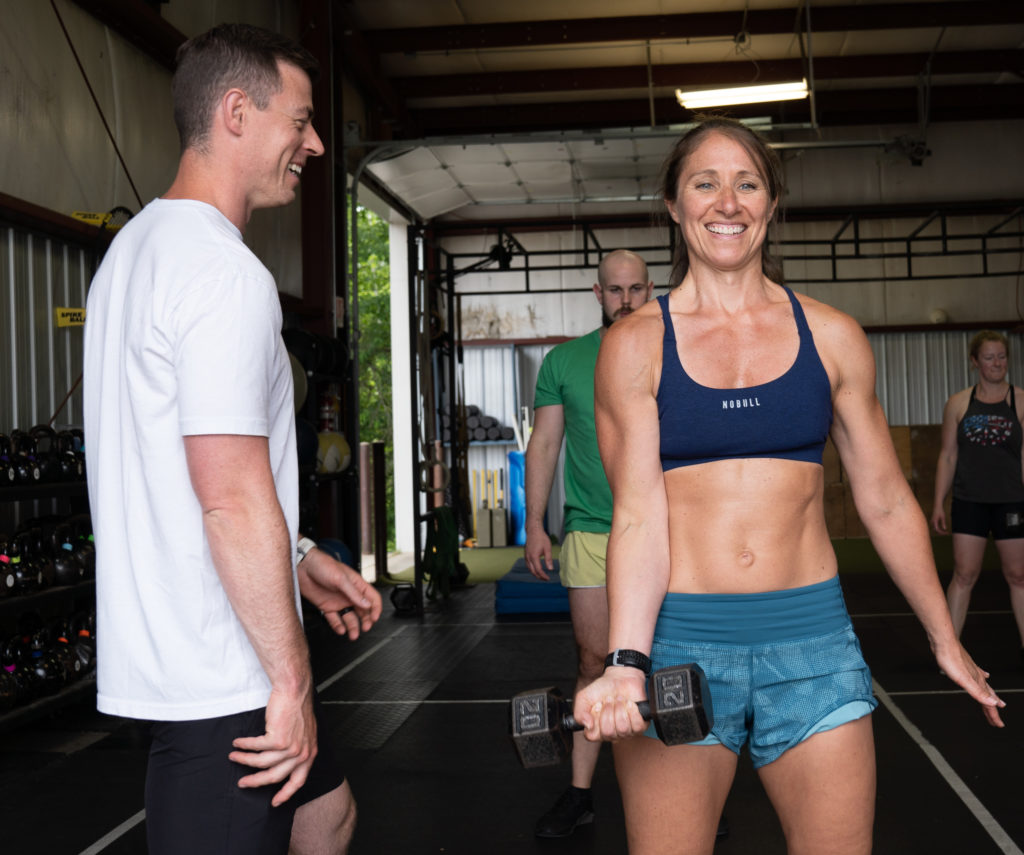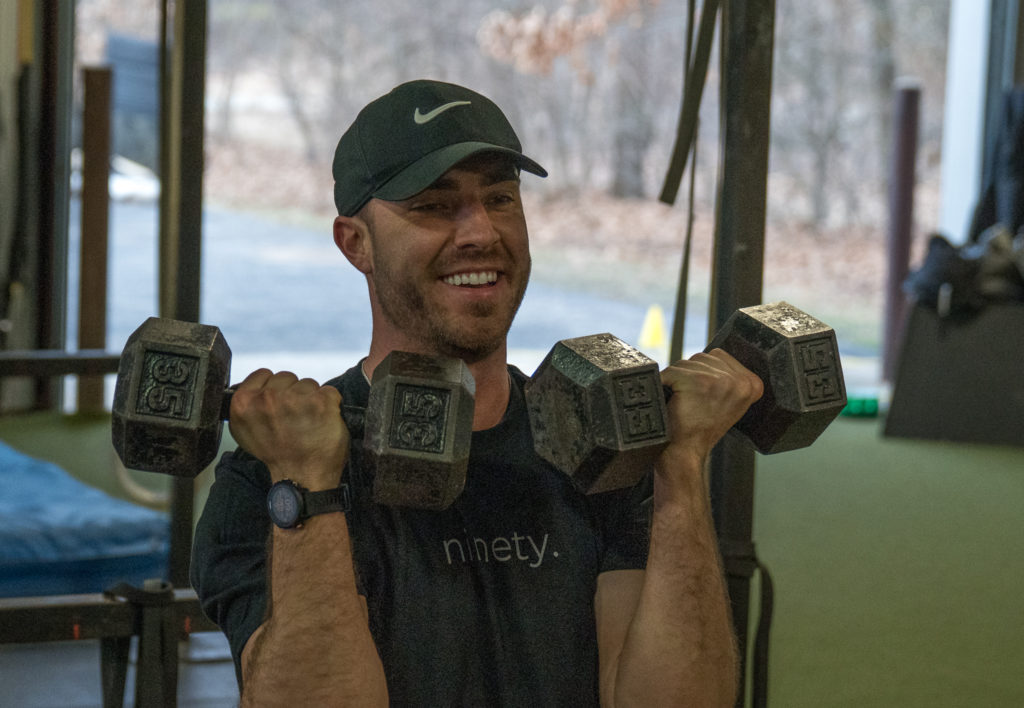
Should you get a personal trainer?
Why Personal Training?
Our Individual Design Program serves a range of private clients with a wide variety of motivations for joining. Some reasons are straightforward like losing weight and getting fit, while others are seeking to accomplish personal and professional goals.
No matter what your goal, your Individual Design Coach is here to guide you to success.
Whether you’re looking to lose weight, increase strength, improve technique or prepare for a specific event, a more personal setting and an individually designed program means faster results.
Why should you start personal training?
- You haven't exercised for 6 months or more and want to kick start your fitness journey
- You have a previous injury or are at risk of injury and want to ensure proper movement patterns
- You want to build confidence in the gym or with specific movement patterns
- You want even faster results to achieve your goals
Why is Individual Design the evolution of personal training?
Our Individual Design Coaches are trained to deliver Personalized Fitness. Personalized Fitness is the best of Personal Training (an individualized workout and strong coach-client relationship), plus comprehensive assessment and consultation protocols, proper nourishment prescriptions and lifestyle coaching.
But, most importantly, Our Individual Design Coaches are trained to develop your autonomy, self-accountability and independence. Fitness is a lifelong commitment. While we hope to support you for as much of that journey as possible, our goal is to equip you with the tools you need to for lifelong success, with or without your coach.
If you are new to the gym or in need of some 1:1 support, your Individual Design Coach will teach you movement patterns, ensuring that you truly understand and are confident in your abilities. This way, you don’t need a personal trainer counting your reps forever, saving you hard earned money in the long run.
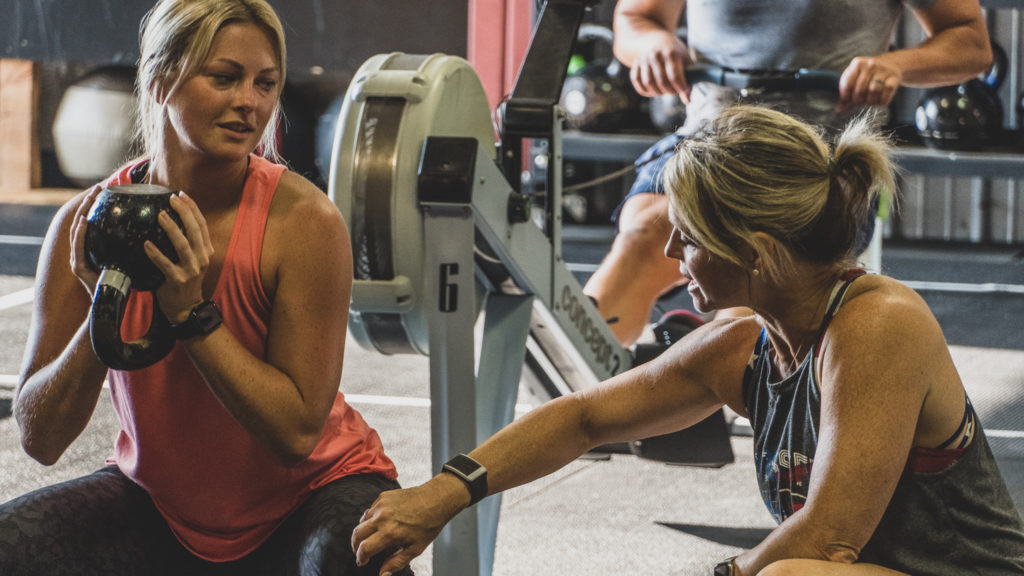
Our Individual Design Program
You will be working out in a private gym with a knowledgeable and motivating Individual Design Coach and a small group of fellow members. Rather than all doing the same workout, you’ll each have your very own personalized fitness program.
Individual Design vs Traditional Personal Training
Lets compare the traditional personal training method to the Individual Design Training method
THE TRADITIONAL PERSONAL TRAINING METHOD
You sign up for 3x per week personal training at $75 per session. Monthly fees can average $900! You’ll gain much needed 1:1 motivation and accountability, but after 3 months, do you really still need that same level of 1:1 attention?
After 3 months of being coached 1:1 most people should have more than enough knowledge, motivation, and confidence to get to the gym, safely perform movements and complete their workout, with ongoing support from a coach but without the need for a babysitter.
THE INDIVIDUAL DESIGN PERSONAL TRAINING METHOD
Individual Design clients work out in a private gym with a small group of fellow members. On certain days you’ll have an Individual Design Coach on the floor to ensure the safety and proper intensity of all members in the gym. The Individual Design Coach on the floor has access to each members personalized fitness program. So they can coach that days session and share feedback with the coach working 1:1 with that member.
All of our members work with a dedicated coach who looks at the big picture, designs their program and daily workouts, provides lifestyle and nutrition guidance, and meets with them for monthly consults to ensure progress - all at less than half the cost of Personal Training
Why is this the future?
Because of this small group setting members don’t need to pay $900 plus a month to be coached at the gym 3x per week. An Individual Design membership is less than half of that, including access to a private gym and unlimited sessions with our coaches.
+ PRIVATE GYM ACCESS
Our gym is purpose built with the functional fitness equipment to meet the needs of all training goals.
+ PROFESSIONAL COACHING
The fitness industry is unregulated and full of low quality personal trainers. Our floor coaches are all educated through the OPEX Fitness System of Coaching and have 1000’s of hours experience.
+ NUTRITION
You’ll get nutrition and lifestyle coaching to maximize the 23 hours of the day you spend out of the gym. Our Coaches help you navigate daily choices to achieve your goals. Establishing healthy behaviors is the key to weight loss and muscle gain. Nutrition and lifestyle are the foundation to body composition changes.
+ ACCOUNTABILITY/MOTIVATION
You’ll be assigned your personal coach who will design your fitness program and guide you to success. Behind the scenes they will deliver your daily fitness and lifestyle program, keep you accountable, and be a source of education for you to rely on.
+ ASSESSMENT
We have a saying “Assess, don’t guess.” Whatever your goal, we need to measure where you’re at now and regularly reassess.. Your coach may assess your body composition, weight, hydration, visceral fat, strength, mobility, stability, aerobic fitness, anaerobic fitness, power, speed and more, depending on your goals.You and your coach will revisit assessments regularly to ensure that you are making progress and achieving the results that you want.
+ ATMOSPHERE & FUN
If you dread going to the gym or just find it boring, you’ll never make it part of your lifestyle. The coaches and fellow members keep your gym experience fun. You’ll get to know members quickly and enjoy our social events.
+ CONSULTATIONS
Every month you’ll sit down with your personal coach to discuss your progress. Your monthly consult is your time for honest conversations about nutrition, sleep, stress, and all things lifestyle. You and your coach will work to create a lifestyle that supports your results.
+ LONG TERM PROGRAMMING
After your assessment and consultation your personal coach will map out what the next 12 months might look for you. Each month they will refine that program and plan the specifics. This style of properly periodized training will be a big part of why you get the best results you’ve ever had. Long-term planning will also help keep you injury-free by balancing work and recovery. It’s a sad reality, but most personal trainers haven’t even planned their client’s next week, let alone the whole year. Your Individual Design Coach will design a fitness experience that will support your long-term health.
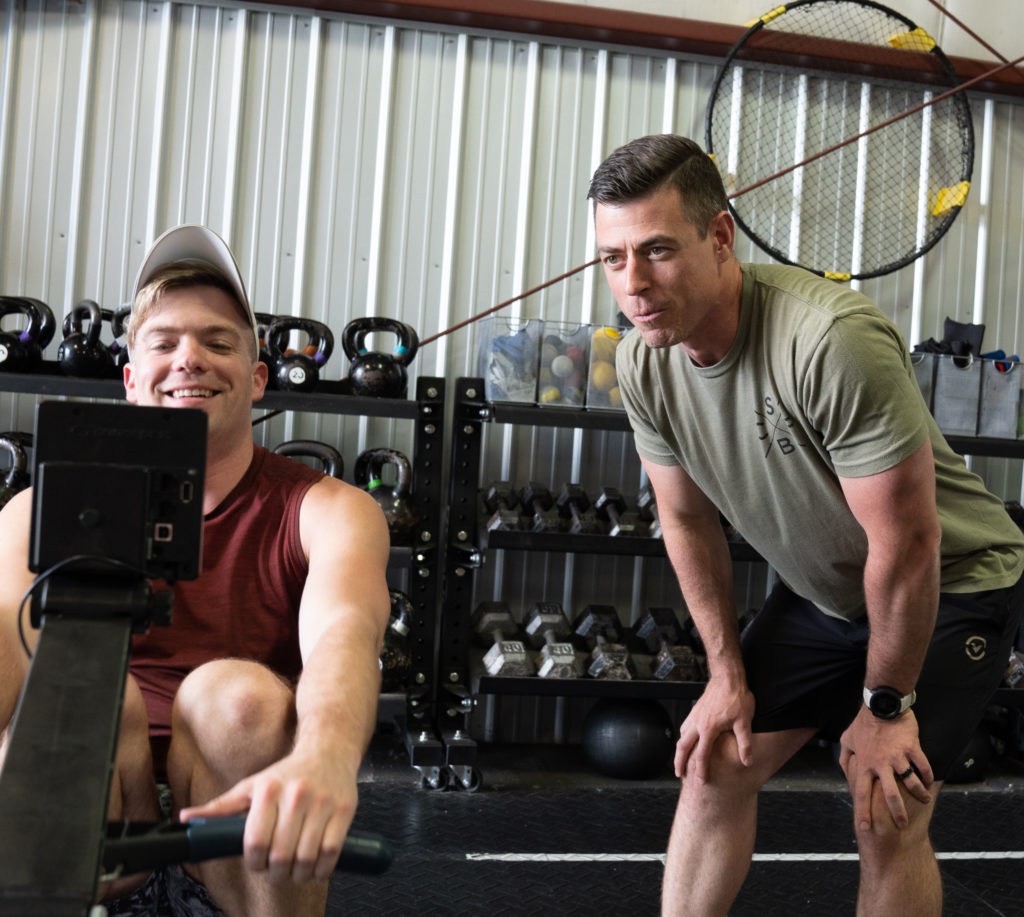
YOUR PERSONAL FITNESS COACH
We know your fitness goals are important to you but personal training can be expensive and unsustainable. Instead, make an investment in educating yourself, creating confidence and ultimately, independence. Together, we will work towards improving your health and fitness with systems and processes that you can apply forever.
Think of us as your fitness mentor.
Our Individual Design Coaches are among the best personal trainers in the world. They care about your success in and out of the gym.
Take the next step in your fitness journey.
RESULTS
Results are non-negotiable,
Fun is essential.
We treat you as a person, not a number. We find solutions for the things that are getting in the way of your goals. We help uncover the roadblocks you're facing, we design solutions for those pain points, and we make it fun and rewarding.
Hear what others are saying
Shanna M
I started 6 years ago with group classes at CFSB and got curious about ID when I realized I had goals that I wouldn't be able to achieve without intentional focus on those goals. I was sure I couldn't love anything more than the group classes. I was wrong. I definitely love it more. I love knowing that every bit of my training program is written purposefully for me, by my own coach, who understands my goals. I know if those goals change, so does my programming. I love that what I enjoy is taken into consideration, so that I have training days that are both effective and fun. I love that there is an efficient way for me to communicate with my coach. I love that even though I am not being coached during my workouts, coaches are available if and when questions arise. I feel incredibly supported in the gym. And NOW I am sure there is nothing I could love more!
Austin D
Individual design at CFSB has honestly changed my life. Regardless of the current goal in my life whether it be training for a marathon, getting stronger, getting leaner, etc. Brandon is able to program workouts and guide me in a way that helps me achieve my goals. It’s so nice to not have to research the methods or approaches I need to take, but just rely on the proven expertise he has as a coach. All I need to do is exactly as I’m told. I could not recommend Individual design enough to anyone regardless of your fitness experience or goals
Dawn L
I was frustrated over loosing my hair and suffering from unexplained bruising. I am a nurse and tried everything I could think of to resolve my issues with no success. I had poor flexibility and a history of knee problems. All of these issues were dramatically affecting my quality of life. I started with individual design to accommodate my inflexibility. Wow what a difference. I have someone who will listen and guide me. I also started working with the nutrition program through CrossFit South Bend. My hair is growing back. My bruising has subsided and I have energy again. My job as a Cardiac Nurse is physically taxing. Working 12 hour days requires my health to be solid. I am fortunate to have found these programs to help me live my life with optimal quality.
2022 12 28
